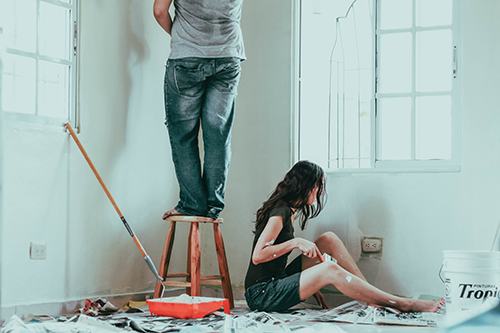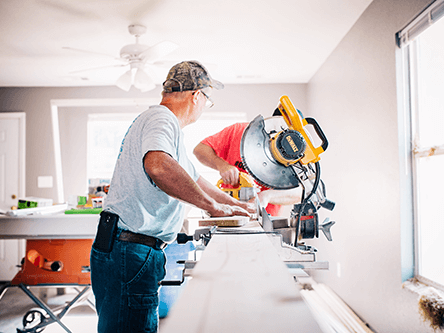
Making improvements to your home can be expensive. But, there are some good tactics you can implement that could help you lower the costs.
In this blog, we’ll look at some of the best ways to save money on home improvements.
Our top ways to cut home improvement costs:
1. Make a clear plan
Before starting a project, it’s always important to have a clear plan in place. This will help you to understand how much money, time and resources you need to complete the project successfully.
Having a plan will also give you a structure to follow, which may help you to reduce unnecessary spending and time wasting.
A good starting point is to explore the best home improvements for modernising and updating your house.
2. Decide on a budget
Creating a budget is vital, particularly if you don’t have a huge amount of money to spend.
By having a budget you will be able to monitor and manage your spending. In turn, this may prevent your costs from getting too high.
3. Consider DIY
Doing some of the project yourself can really help to lower the costs, but it’s also a fun way to spend some of your spare time.
All you need to do is have a search on YouTube and you can find out how to do virtually anything. With so many video tutorials available to you, it can be easy to pick up some new skills and techniques.
4. Pace yourself
Whilst it can be easy to try and rush the process along, it’s always worth pacing yourself. The more you rush, the more likely it is that you will spend unnecessarily to get the job done.
Maybe an item you wanted has gone out of stock and the only replacement you could get is twice the price. In this situation, you might be tempted to pay the extra, but if you’re conscious about your money it’s wise to wait it out.
Understandably, you might be eager for the project to conclude, but patience will always pay off in the end.
5. See if you can reuse old materials
Reusing old materials is not only good for the environment, but it can also help you save some extra pennies. So, if you have any spare wood, paint or other materials, see if there’s a way you can bring it into your design.
6. Look for sales and discounts
Do your research carefully. If you need to buy materials make sure you shop around and see if there are any discounts or sales you can take advantage of.
If you look hard enough you may be able to find some fantastic bargains that could really reduce your costs.
7. Get help if you need it
It can be tempting to try and do everything yourself, but the reality is this sometimes isn’t possible. It can often be more expensive to fix something you’ve done wrong than it is to seek help in the first place.
Costs can still be minimised by looking for local businesses or friends and family who might be able to assist.
8. Pay for materials with a rewards credit card
A rewards credit card will give you cashback on anything you spend. Therefore, if you need to buy some new materials, it’s worth using one of these cards to pay for it, so you can save some extra money.
However, you must pay the balance off in full every month to avoid any interest charges, which can often be particularly high on this form of credit.
9. Buy second - hand
Wherever possible try to buy second-hand furniture and items. Usually, the prices will be much lower and the quality can be good, so you can get some great bargains.
What’s more, upcycling can be very trendy and can help you to give your home some unique touches.
10. Shop around for different quotes
If you’re planning a larger home improvement project that needs extra funding, it’s important that you shop around for different deals.
Never settle for the first offer you find!
There are lots of different finance options available that can be used in this situation, including unsecured loans and secured loans. Both of these options will have different terms and interest rates, so it’s worth speaking to a few different companies to find the lowest cost solution possible.
Summary
All in all, there are a number of different tactics you can use to reduce renovation costs. It’s important to utilize as many of these methods as possible (if they apply to your project) to make a substantial difference.
Think carefully before securing other debts against your home. Your home may be repossessed if you do not keep up repayments on a mortgage or any other debt secured on it.




